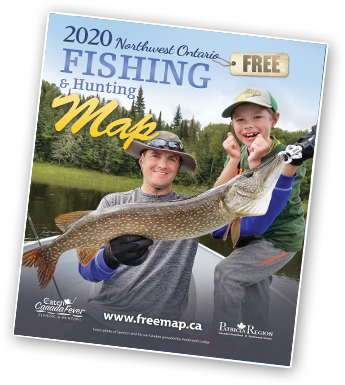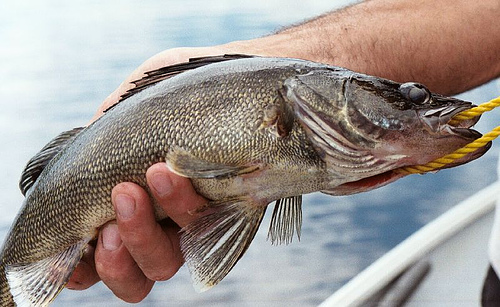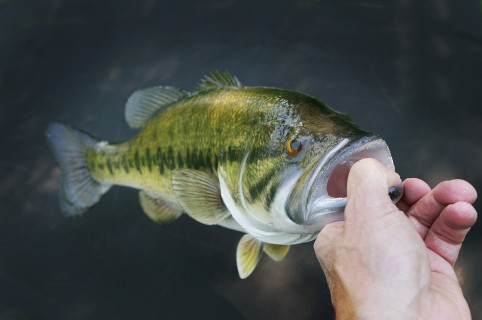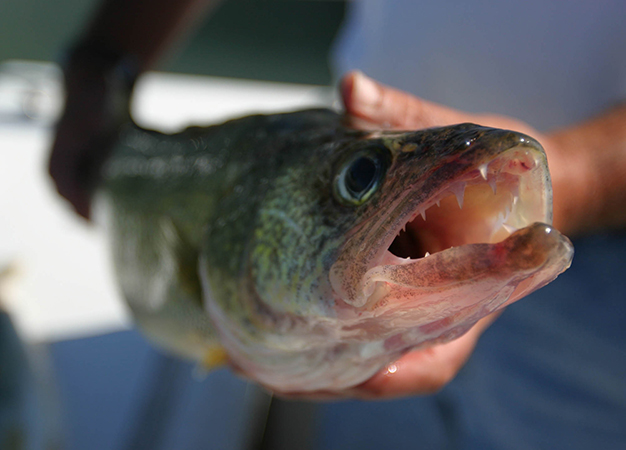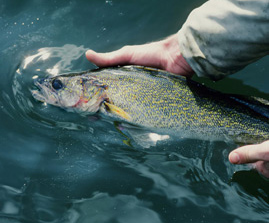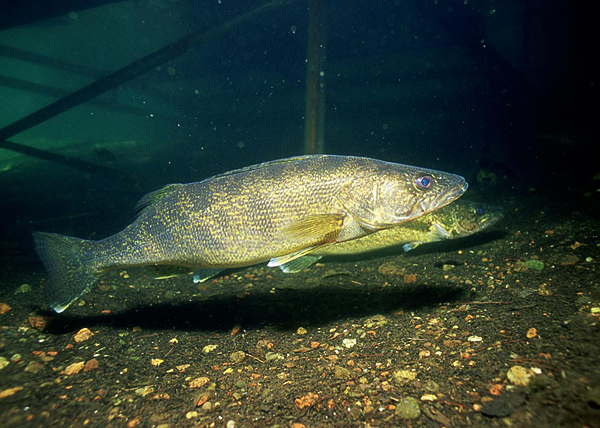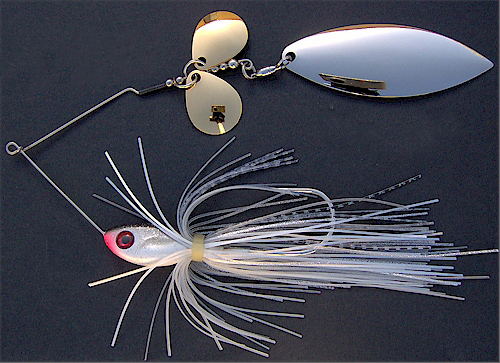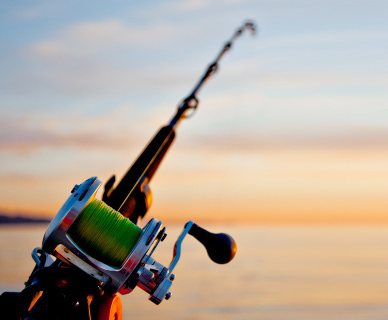By Michael Bilsbarrow
Where can you travel in a reasonable amount of time, at a reasonable cost and still experience excellent night walleye fishing in a true wilderness setting without the additional expense of “flying in”?
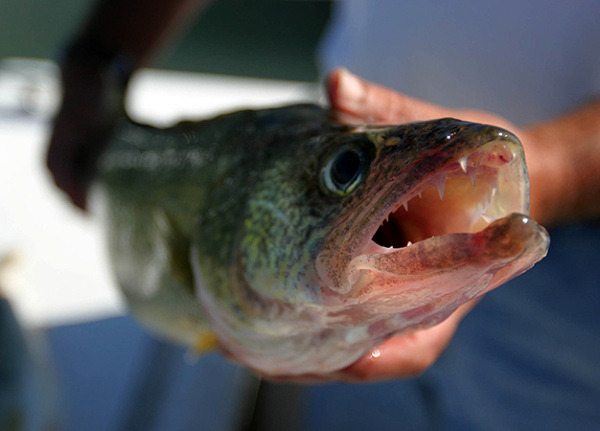
Now that’s a tall order to fill, but it is still possible to find such a place in many areas of the Patrcia Region Canada’s Heartland. My personal favourite body of water in this category is Lac Seul. In the French language, Lac Seul means “Lake Alone” and this is a lake alone, both in size and quality of the fishery. More than 95 per cent of this monstrous reservoir (it is more than 100 miles in length) is still in its natural wilderness state. Lac Seul always provides me with that ever so important break from the seemingly endless grind of the work-a-day world. And the fishing…. let me tell you about fishing. To say fantastic does not do justice — perhaps phenomenal would be a better word.
Like all good things that seem to be too good to be true, there are always a few drawbacks or at least some things that appear on first sight to be disadvantageous. So it is with this wonderful natural resource. Regulations? You bet. But wait a minute, those constraints are what makes and keeps this road accessible lake a first class fishery as well as a true wilderness experience.
The things that you can’t do on this magnificent body of water are: camp (other than at a commercial campground); keep a walleye in the 18-21 inch slot size (which means releasing a lot of fish because this is the average size of Lac Seul walleye); keep a northern in the 27.5 in – 35.4 in slot. You may keep walleye and one northern over slot as part of your four fish per species limit. Live wells and stringers are not allowed on Lac Seul. You need to immediately decide when you catch a fish if you are going to release it or keep it. If you are going to keep it you need to kill it and store it on ice or in a keep sack. This is to help prevent culling. These may seem like pretty stiff rules but if you want to keep a road accessible lake as a first class fishery, you need some pretty stiff rules. Those same rules are your guarantee that your children will experience it as it is today.
Lac Seul has been targeted by the Ontario Ministry of Natural Resources as a lake to be preserved as a wilderness lake with a first class fishery. Unlike many remote, fly in lakes which frequently offer an extraordinary fishery for smaller walleye (say one to three pound fish), Lac Seul offers larger fish in good quantities. This is due to the installation of sanctuaries for spawning areas and the addition of a slot size restriction before depletion of the fishery occurred.
Novel idea? Yes.
Good resource management? I think so.
I live in Dryden about 40 miles due south of this lake and I fish all over Northwestern Ontario. But my favourite spot for walleye is Lac Seul. Why? Well, it is not uncommon to catch a dozen walleye a day in the four to five pound range, along with lots of smaller fish for eating and a sprinkling of six to eight pounders for excitement. Sounds too good to be true? No fishery is perfect every day, but I have, over the years, had a heck of a lot more days like that than days I couldn’t get the skunk out of the box. Personally, I would rather catch and release a dozen four pound fish with the chance of a trophy than catch a zillion small ones — except, of course, when it comes to eating. We all know you can’t beat those little guys for good taste.
Local knowledge is no doubt a great asset when it comes to fishing a big lake like this one and most fish camps and resorts on the lake offer guide services. On your first trip to Lac Seul you would be well advised to engage the services of one for at least a day or two. This will allow you to get your bearings and also give you the opportunity of observing the locations and type of structure that the walleye are currently relating to. As with most large reservoirs, the walleye are almost constantly on the move from spring when they are still close to their spawning ground to late summer when they can be scattered all over the lake, however, it is the responsibility of any reputable guide to stay on top of the fish. That is not to say a guide will guarantee you fish, but it certainly ups your odds of making contact with them. Spend your time with the guide not just blindly fishing but ask questions about depths, types of structure they have been having the most success with, etc. In other words, pick his or her brain for every tiny little bit of information you will be able to use when you become your own guide. You might also take along your GPS and mark a few important points for future reference (ie. how to get back to the lodge, major reefs and where you caught fish).
Some general hints may help you:
Early spring, right after openers, fish close to spawning areas and don’t overlook rubble shorelines because a large portion of the walleye here are shoal spawners not river spawners.
Work very shallow waters as it warms up, especially any mud lines from shores adjacent to likely spawning areas. (I find that black or purple 1/4 oz. jigs with the same colour twister tails tipped with a minnow is the number one producer for me in spring conditions here). In the mud lines fish shallow, one to six feet.
For almost the entire month of June, I like to look for an area where the perch are either spawning or have just finished. Walleye, who, like we humans, delight in a nice fresh perch dinner, are often found in these areas after they recover from their spawn. Minnows on a chartreuse spinner are a good producer and floating worm harnesses with the same color spinner are also excellent. Casting quick diving body baits works nicely and there is no doubt about the hook up with these.
In July and August you will find me working weed lines during the day with worms or leeches on various spinner rigs, or fishing just before sunset for suspended fish with huge Rapalas (S-18’s) on long lines (100 yards), over deep waters which are 60 feet plus and around open area reefs. This method does not produce a great quantity of fish but the ones you get are granddaddies. You’ll pick up some nice bonus northerns this way too. If you are confident about finding your way home after dark, try those same open water reef tops after dark.
One wild card and one word of caution in closing, and they are both contained in two words (“lake level”).
Lac Seul does not change level rapidly so it is not likely that where you fished today there will be no water tomorrow. But the pool does vary some six to eight feet over the season. You want to be aware of the water level each time you go out. The spot you went last month or last year might not be where you want to go this trip. Good navigation, a good map and good sense, all go hand in hand on the big lake.
For more information, contact The Patricia Region Tourist Council……


